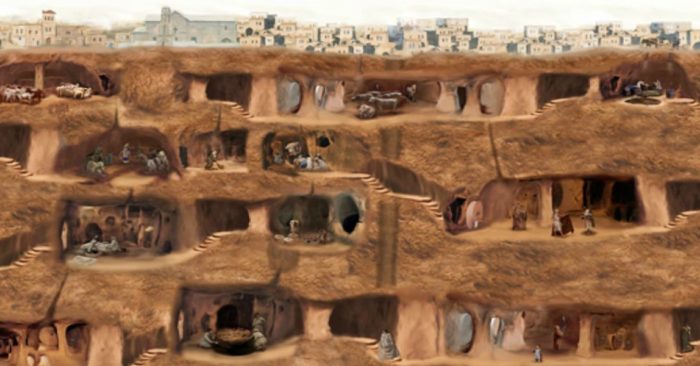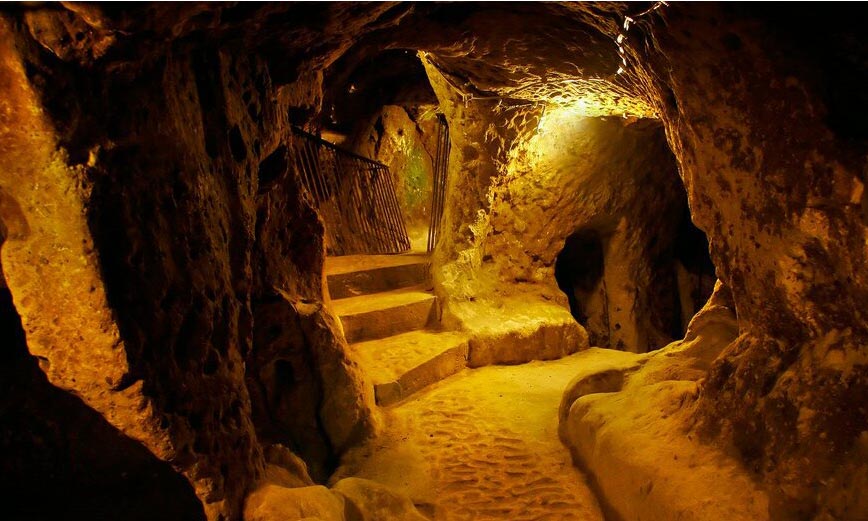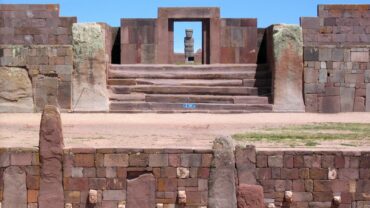The Mystery Of The Underground City Of Derinkuyu
In 1963, a man was found in a chamber repairing his home. Upon exploring it, he discovered numerous additional rooms, only to discover that they were all part of the Derinkuyu Underground City. This town may be located in Turkey.
As archaeologists began excavating on the site, they discovered that the two chambers found were merely a tiny fraction of a much bigger building.
Tourists were allowed to visit the site beginning in 1969, although only a fraction of it was available to the public, with a considerably bigger area remaining off-limits.
The ancient architects of Derinkuyu had to be very careful while creating these underground chambers, ensuring adequate pillar strength to hold the floors above; if this were not done, the city would have fallen, but archaeologists have uncovered no evidence of any “cave-ins” at Derinkuyu so far.

The city has eight stories that reach a depth of around 100m. Some items discovered at the site imply that it was erected by the Phrygians in the 8th–7th century B.C., although Hittite-style seals suggest a far older date of 1900–1200 BC.
Derinkuyu, the town where this underground city is located, also has the same name. The city is claimed to have at least 600 entrances accessible from the surface and may be discovered in various city locations.
There were churches, basements, wine rooms, and even stables in the city. There was also a school there. You will come upon a church as you descend to the third and fourth floors. The majority of the feet are accessed through stairs. Furthermore, there were water wells on some floors, but not all of them.
This was a prudent step to guarantee the population’s safety in the case of poisoning. There were ventilation shafts on each floor as well. There were a total of 15000 posts.
It has long been thought that the city was never intended to be a permanent abode. There was little question that the city could accommodate thousands of people, including cattle, but it appeared to be more of a haven of a sanctuary than a long-term residence. This may also be observed in the way the city was created. It is robust and durable.
The city contained a plethora of interconnected corridors and chambers. This was most likely done to allow people to gather in shared spaces of labor and, most likely, worship.

The city was well-planned and constructed. This is evident in the niches suitable for oil lights and others for stables. In addition, there were chimneys, water storage sites, and stores.
Surprisingly, the city also featured locations where the deceased might be kept until the time came to give them a befitting burial on the surface.
The city was also highly fortified in that it had stone doors installed in various places of the corridors to guarantee that the routes could be rapidly stopped in the case of an attack.
One thousand pound rolling doors could only be opened from the inside and could only be controlled by one person. Derinkuyu’s floors or levels might have been secured independently.

underground city of derinkuyu
Historians believe that the city’s purpose circa 800 B.C. was to defend its residents from attack. Still, many researchers disagree, stating that it would have been an enormous, too complicated engineering undertaking only to safeguard people from invasion.
Derinkuyu raises a slew of issues, most of which remain unanswered. Who created this massive underground city? What might have compelled over 20,000 individuals to live underground?
What exactly was the objective of this underground fortress? Was it to keep people safe from conflict or climate change? Or is it anything else?
Some ancient alien theorists believe Derinkuyu was built for survival, but from an aerial enemy, claiming that it would be the only plausible reason to hide underground; to remain unseen, claiming that Derinkuyu’s complex security system was put in place to prevent the underground city from being discovered, and was concealed underground, where no one could assume more than 20,000 people were hiding.



